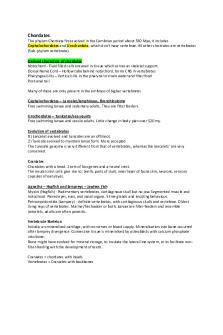CPP and EI Premiums - Lecture notes 12 PDF

| Title | CPP and EI Premiums - Lecture notes 12 |
|---|---|
| Course | Business Management and Organizational Behaviour |
| Institution | Seneca College |
| Pages | 2 |
| File Size | 135.1 KB |
| File Type | |
| Total Downloads | 77 |
| Total Views | 128 |
Summary
CPP and EI Premiums ...
Description
CPP and EI Premiums
Canada Pension Plan (CPP) premium rates Year
2008
2007
2006
2005
2004
$44,900
$43,700
$42,100
$41,100
$40,500
basic exemption
$3,500
$3,500
$3,500
$3,500
$3,500
rate
4.95%
4.95%
4.95%
4.95%
4.95%
maximum pensionable earnings
employee/employer maximum
$2,049.30 $1,989.90 $1,910.70 $1,861.20 $1,831.50
self-employed maximum
$4,098.60 $3,979.80 $3,821.40 $3,722.40 $3,663.00
The new CPP premium tables are not yet available. See the November 2, 2007 Canada Revenue Agency (CRA) news release. For 2007, see the CRA publication T4032 Payroll Deduction Tables effective January 1, 2007. Who has to pay CPP premiums? Employers are responsible for deducting the above premiums from employees who are 18 to 69 years old, unless the employee is collecting a CPP retirement or disability pension. The employer pays the same premium as the employee. Self-employed people must pay both the employee and employer portions. There are some types of employment and other payments from which CPP premiums do not have to be deducted. See Employment not subject to CPP and Benefits & payments NOT subject to CPP on the CRA website. When a person has both employment and self-employment earnings, the total CPP premium paid will be based on total employment plus self-employment earnings. See the following example of the calculation, for 2006, as it would be calculated on Schedule 8 of the personal tax return. Pensionable net self-employment earnings Employment earnings not shown on a T4 slip on which you elect to pay additional CPP contributions
$20,000
Subtotal (zero if negative)
$20,000
Pensionable employment earnings from T4
35,000
Total pensionable earnings
$55,000
Less basic exemption
-3,500
Earnings subject to contribution (maximum $38,600)
$38,600
CPP contributions @9.9%
3,821.40
Less contributions paid through employment (from T4)
$1,559.25
x2 =
-3,118.50
Contributions payable on self-employment and other earnings (zero if negative)
$702.90
The taxpayer would have to remit $702.90 of CPP premiums along with taxes payable. In calculating taxes payable, a non-refundable tax credit would be allowed based on CPP of $1,559.25 paid on employment earnings, plus 50% of the $702.90 CPP on self-employment earnings, or $351.45 The other 50% of CPP on self-employment earnings, or $351.45, is allowed as a deduction from income. This deduction is the employer portion of the CPP contribution. When an employee files a tax return, a non-refundable tax credit is calculated based on CPP premiums paid. [back to top] Employment Insurance (EI) premium rates Year maximum insurable earnings basic exemption employee rate employee maximum employer rate employer maximum self-employed
2008
2007
2006
2005
2004
$41,100
$40,000
$39,000
$39,000
$39,000
nil
nil
nil
nil
nil
1.73%
1.80%
1.87%
1.95%
1.98%
$711.03
$720.00
$729.30
$760.50
$772.20
2.42%
2.52%
2.618%
2.73%
2.772%
$994.62 $1,008.00 $1,021.02 $1,064.70 $1,081.08 n/a
n/a
n/a
n/a
n/a...
Similar Free PDFs

EI Pdipd - Lecture notes 7
- 3 Pages

12 - Lecture notes 12
- 3 Pages

CPP
- 2 Pages

Lecture notes, lecture 12
- 9 Pages

Lecture notes, lecture 12
- 7 Pages

Chapter 12 - Lecture notes 12
- 4 Pages

Lab 12 - Lecture notes 12
- 5 Pages

LEC 12 - Lecture notes 12
- 3 Pages

(12) Mistake - Lecture notes 12
- 8 Pages

Chapter 12 - Lecture notes 12
- 9 Pages

Lecture notes, lecture 1-12
- 64 Pages

Sachvui - Lecture notes 12
- 271 Pages

Mujadid - Lecture notes 12
- 1 Pages
Popular Institutions
- Tinajero National High School - Annex
- Politeknik Caltex Riau
- Yokohama City University
- SGT University
- University of Al-Qadisiyah
- Divine Word College of Vigan
- Techniek College Rotterdam
- Universidade de Santiago
- Universiti Teknologi MARA Cawangan Johor Kampus Pasir Gudang
- Poltekkes Kemenkes Yogyakarta
- Baguio City National High School
- Colegio san marcos
- preparatoria uno
- Centro de Bachillerato Tecnológico Industrial y de Servicios No. 107
- Dalian Maritime University
- Quang Trung Secondary School
- Colegio Tecnológico en Informática
- Corporación Regional de Educación Superior
- Grupo CEDVA
- Dar Al Uloom University
- Centro de Estudios Preuniversitarios de la Universidad Nacional de Ingeniería
- 上智大学
- Aakash International School, Nuna Majara
- San Felipe Neri Catholic School
- Kang Chiao International School - New Taipei City
- Misamis Occidental National High School
- Institución Educativa Escuela Normal Juan Ladrilleros
- Kolehiyo ng Pantukan
- Batanes State College
- Instituto Continental
- Sekolah Menengah Kejuruan Kesehatan Kaltara (Tarakan)
- Colegio de La Inmaculada Concepcion - Cebu


